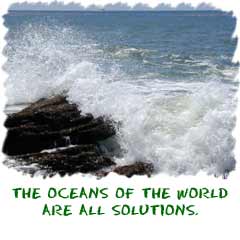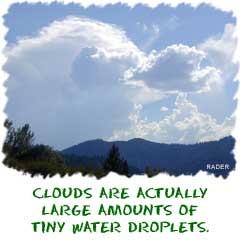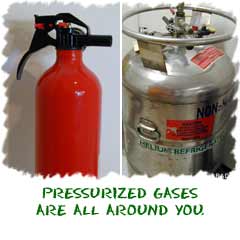
Let study about Kinetic Theory of Matter.
1. Matter is anything that occupies space and has mass. Matter exists in three
states which is solid, liquid and gas.
2. Matter is made up of tiny and discrete particles.
3. An atom is the smallest particle of an element that can participate in a chemical reaction.
4. An ion is a positively-charged or negatively-charged particle.
5. Particles in matter are in motion.
6. Diffusion occurs when particles of a substance move in between the particles of another subtance.
7. Diffusion of matter occurs most rapidly in gases, slower in liquids and slowest in solids, due to the different arrangement and movement of particles in the three states of matter.
8. The change in heat changes the state of matter.
10. When a substance is heated, the particles gain kinetic energy and move faster.
11. When a substance is cooled, the particles loss their kinetic energy and move slower.
3 Type of Particles: click here for more
Atoms--- the smallest particle of an element that can participate in a chemical reaction.
Molecules---group of two or more atoms held together by chemical bonds. Usually form from covalent bond.
Ion---- An ion is an atom or molecule in which the total number of electrons is not equal to the total number of protons, giving it positive or negative. Usually form from ionic bond.
 Solid
Solid
 So what is a solid? Solids are usually hard because their molecules have been packed together. The closer your molecules are, the harder you are. Solids also can hold their own shape. A rock will always look like a rock unless something happens to it. The same goes for a diamond. Even when you grind up a solid into a powder, you will see little tiny pieces of that solid under a microscope. Liquids will move and fill up any container. Solids like their shape.
So what is a solid? Solids are usually hard because their molecules have been packed together. The closer your molecules are, the harder you are. Solids also can hold their own shape. A rock will always look like a rock unless something happens to it. The same goes for a diamond. Even when you grind up a solid into a powder, you will see little tiny pieces of that solid under a microscope. Liquids will move and fill up any container. Solids like their shape.  In the same way that a solid holds its shape, the atoms inside of a solid are not allowed to move around too much. This is one of the physical characteristics of solids. Atoms and molecules in liquids and gases are bouncing and floating around, free to move where they want. The molecules in a solid are stuck. The atoms still spin and the electrons fly around, but the entire atom will not change position.
In the same way that a solid holds its shape, the atoms inside of a solid are not allowed to move around too much. This is one of the physical characteristics of solids. Atoms and molecules in liquids and gases are bouncing and floating around, free to move where they want. The molecules in a solid are stuck. The atoms still spin and the electrons fly around, but the entire atom will not change position. Liquid
 The second state of matter we will discuss is a liquid. Solids are hard things you can hold. Gases are floating around you and in bubbles. What is a liquid? Water is a liquid. Your blood is a liquid. Liquids are an in-between state of matter. They can be found in between the solid and gas states. They don't have to be made up of the same compounds. If you have a variety of materials in a liquid, it is called a solution.
The second state of matter we will discuss is a liquid. Solids are hard things you can hold. Gases are floating around you and in bubbles. What is a liquid? Water is a liquid. Your blood is a liquid. Liquids are an in-between state of matter. They can be found in between the solid and gas states. They don't have to be made up of the same compounds. If you have a variety of materials in a liquid, it is called a solution. One characteristic of a liquid is that it will fill up the shape of a container. If you pour some water in a cup, it will fill up the bottom of the cup first and then fill the rest. The water will also take the shape of the cup. It fills the bottom first because of gravity. The top part of a liquid will usually have a flat surface. That flat surface is because of gravity too. Putting an ice cube (solid) into a cup will leave you with a cube in the middle of the cup; the shape won't change until the ice becomes a liquid.
 Another trait of liquids is that they are difficult to compress. When you compress something, you take a certain amount and force it into a smaller space. Solids are very difficult to compress and gases are very easy. Liquids are in the middle but tend to be difficult. When you compress something, you force the atoms closer together. When pressure go up, substances are compressed. Liquids already have their atoms close together, so they are hard to compress. Many shock absorbers in cars compress liquids in tubes.
Another trait of liquids is that they are difficult to compress. When you compress something, you take a certain amount and force it into a smaller space. Solids are very difficult to compress and gases are very easy. Liquids are in the middle but tend to be difficult. When you compress something, you force the atoms closer together. When pressure go up, substances are compressed. Liquids already have their atoms close together, so they are hard to compress. Many shock absorbers in cars compress liquids in tubes. A special force keeps liquids together. Solids are stuck together and you have to force them apart. Gases bounce everywhere and they try to spread themselves out. Liquids actually want to stick together. There will always be the occasional evaporation where extra energy gets a molecule excited and the molecule leaves the system. Overall, liquids have cohesive (sticky) forces at work that hold the molecules together.
Gas
 Gas is everywhere. There is something called the atmosphere. That's a big layer of gas that surrounds the Earth. Gases are random groups of atoms. In solids, atoms and molecules are compact and close together. Liquids have atoms a little more spread out. However, gases are really spread out and the atoms and molecules are full of energy. They are bouncing around constantly.
Gas is everywhere. There is something called the atmosphere. That's a big layer of gas that surrounds the Earth. Gases are random groups of atoms. In solids, atoms and molecules are compact and close together. Liquids have atoms a little more spread out. However, gases are really spread out and the atoms and molecules are full of energy. They are bouncing around constantly. Gases can fill a container of any size or shape. That is one of their physical characteristics. Think about a balloon. No matter what shape you make the balloon it will be evenly filled with the gas atoms. The atoms and molecules are spread equally throughout the entire balloon. Liquids can only fill the bottom of the container while gases can fill it entirely.
 You might hear the term vapor. Vapor and gas mean the same thing. The word vapor is used to describe gases that are usually found as liquids. Good examples are water or mercury (Hg). Compounds like carbon dioxide are usually gases at room temperature so scientists will rarely talk about carbon dioxide vapor. Water and mercury are liquids at room temperature so they get the vapor title.
You might hear the term vapor. Vapor and gas mean the same thing. The word vapor is used to describe gases that are usually found as liquids. Good examples are water or mercury (Hg). Compounds like carbon dioxide are usually gases at room temperature so scientists will rarely talk about carbon dioxide vapor. Water and mercury are liquids at room temperature so they get the vapor title. Gases hold huge amounts of energy, and their molecules are spread out as much as possible. With very little pressure, when compared to liquids and solids, those molecules can be compressed. It happens all of the time. Combinations of pressure and decreasing temperature force gases into tubes that we use every day.
The kinetic theory of matter
State of Matter Characteristic | solid | liquid | gas |
Arrangement of particles | are packed closely together in an orderly manner | are packed closely together but not in orderly manner | Very far apart and in a random motion |
Forces of attraction | Strong forces | Strong forces but weaker than the forces in a solid | Weak forces |
Movement of particles | Particles vibrate and rotate about their fixed positon | Particles vibrate, rotate and move throughout the liquid. They collide against each other | Particles vibrate, rotate and move freely. The rate of collision is greater than in liquid |
Shape / volume | - has a fixed volume and shape | - has a fixed volume and follows the shape of the container | Does not have a fixed shape of volume |
compressibility | Cannot be compressed | Cannot be compressed easily | Can be compressed easily |









Our trained chemists work on custom projects designed specifically for the needs of each client. 1-ethoxyethyl-3-methylimidazolium bromide
ReplyDelete